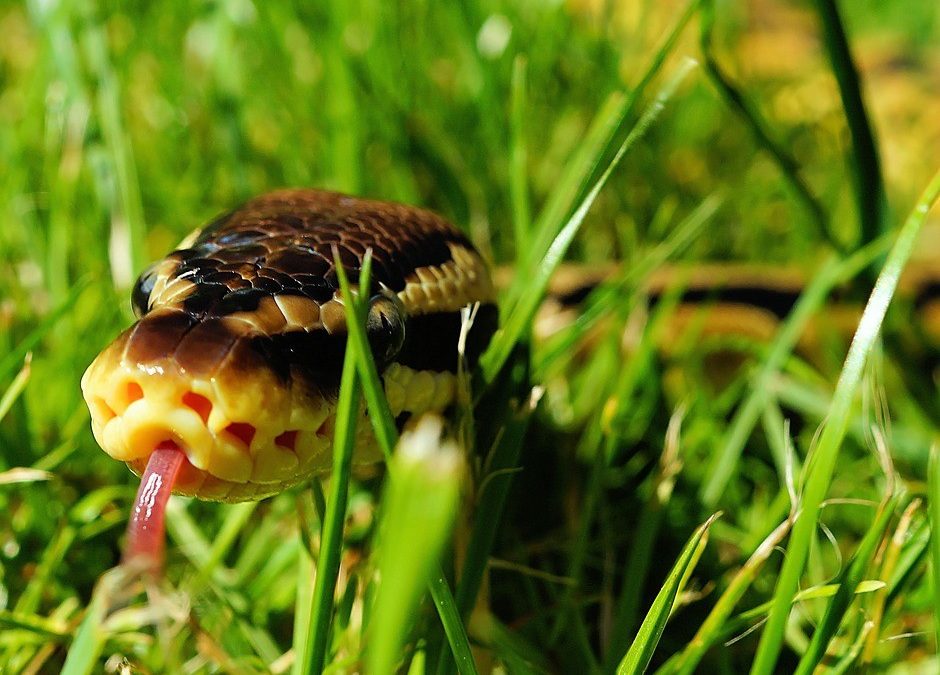Read below for some tips and guidelines to keep in mind as you handle your Ball Python pet. Pay attention to the snake’s responses – often enough, your pet’s reaction will vary – based on the stress they may feel or how you approach them. Remember to always to keep calm and to make your actions slow and deliberate. Other influencing factors could be individual and varying temperaments between individual snakes – not all will react the same way, and this is mostly due to their individual experiences of being handled. In this article, you’ll learn some tips for handling your ball phyton.
They can be very tame as time goes on and they get more used to touching and handling. Though snakes are generally not tactile creatures in general, Ball Pythons, in particular, are relatively tolerant of human touch.
Juvenile Baby Pythons, though, are a bit more secretive and are easy to stress. As they grow, their timidity lessens and they begin to crawl around and explore their habitat. They spend most of their time all balled up or hiding in their shelters. They even sometimes initiate contact by trying to climb their owner’s arms. Do be careful about leaving them unattended, though, because Ball Pythons are notorious escape artists.
Tips for handling your ball phyton
- Never pick your Ball Python up by the head. Almost all snakes tend to thoroughly dislike being petted on their head, as it makes them feel like you are a predator exerting dominance. This will stress them out and may cause them to bite you – a rare occurrence in their species, but maybe a result of instinct.
- Just as well, never pick up your snake by the tail alone either. Doing so may cause it to thrash around in your grip and may end up injuring itself.
- Support and lift your Ball Python from the mid-body area. It will relax better in your grip.
- Be extra careful in handling your juvenile Ball Python, as it is also extra shy and extra nervous. Be prepared for the possibilities that it may crawl away from you – juveniles tend to pick the “flight” instinct in “fight or flight,” and this is especially true of as passive a species as a Ball Python.
- Let the Ball Python become accustomed to your handling. Be gentle and slow in your touch.
- Be sensitive and gauge how they react to your touch. Pay attention to how your Ball Python responds to your movements. After all, it isn’t a dog or a cat that can whine, purr, or bark to let its feelings be known.
Behavioral Characteristics of the Ball Python
This section contains a general guideline on the behavioral characteristics of the Ball Python – each of which should be useful during the handling and husbandry of these snakes.
Although Ball Pythons will have unique and individual character traits that the keeper will become familiar with after years of familiarity, there are common behaviors among all Ball Pythons that can be used as a guide in reading the python’s activities and conduct.
- Ball Pythons do not attack humans, and they ball up their bodies instead of fighting when provoked. Females, however, do show some protectiveness over their eggs and thus should be treated with more care.
- Ball Pythons, like most pythons, are constrictors – using their sharp, backward-curving teeth, they will grasp the prey to restrain it, and then wrap it around with coils. They do not usually crush their prey to death, as opposed to contrary beliefs – they simple asphyxiate their prey so that they may eat it easily.
- This is primarily a terricolous species, which means that they spend most of their time low on the ground. They are also nocturnal, doing most of their activities at night, and they are usually most active on dusk and dawn.
- The juveniles of this species like smaller places. They get extremely agitated and stressed if their enclosure is too big for them. Ball phytons sometimes stop eating because they are daunted by the large space. They are shyer as well and would have to be gently coaxed to be properly handled. Small enclosures make them feel secure.
- These are ambush predators. They avoid detection, seek cover, and wait for their prey. Their hiding skills involve camouflage – which works very well in their natural savannah and grassland habitats – and, of course, curling up into a ball.
- Pythons have infrared-sensitive receptors in deep grooves in their snout, which allows them to “see” the radiated heat of warm-blooded prey. They use their forked tongues to both “smell” and taste – thus allowing them to track their prey – the tongues collect airborne particles which are passed on to the Jacobson’s organ in the mouth for examination. They can also perceive movement through their undersides, which are sensitive to vibrations in the ground.
- Snakes have specialized belly scales which can grip surfaces and which they use to travel or climb. Snake scales are extensions of their epidermis – so shedding removes the complete outer layer as a single unit, rather than separately. This is called shedding, molting, or sloughing, and is useful in replacing old and worn skin while also getting rid of external parasites such as mites and ticks.
- Prior to shedding, the snake stops eating and retreats or hides in a safe place. The inner surface of the skin liquefies at this point, which separates the old skin from the new skin. When the snake is ready – typically after a few days – the eyes clear again and the snake crawls out of its old skin. The new skin is typically larger and brighter than the old one.
Their skin becomes dull and dry looking, and their eyes turn cloudy or blue-colored. Akin to a sock being turned inside out, the old skin breaks near the mouth, and through wriggling and rubbing against rough surfaces, the snake comes out of its old skin – which is peeled back over the body in one piece, from head to tail.
While adult snakes may shed its skin only once or twice a year, younger or juvenile and growing snakes can shed up to four times a year.





 Author and long-time animal lover. Sharing knowledge on pet care through experience and the written word.
Author and long-time animal lover. Sharing knowledge on pet care through experience and the written word.